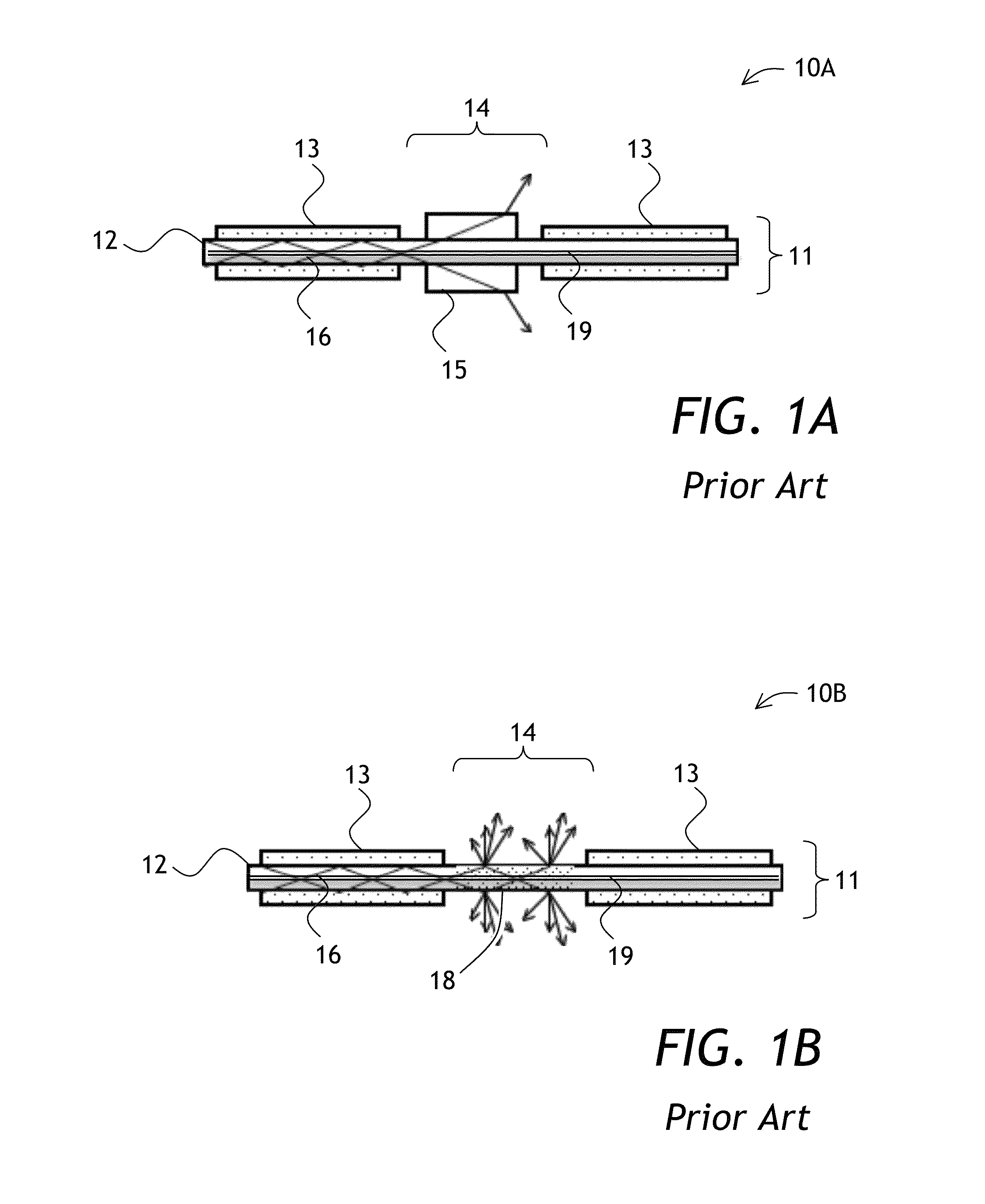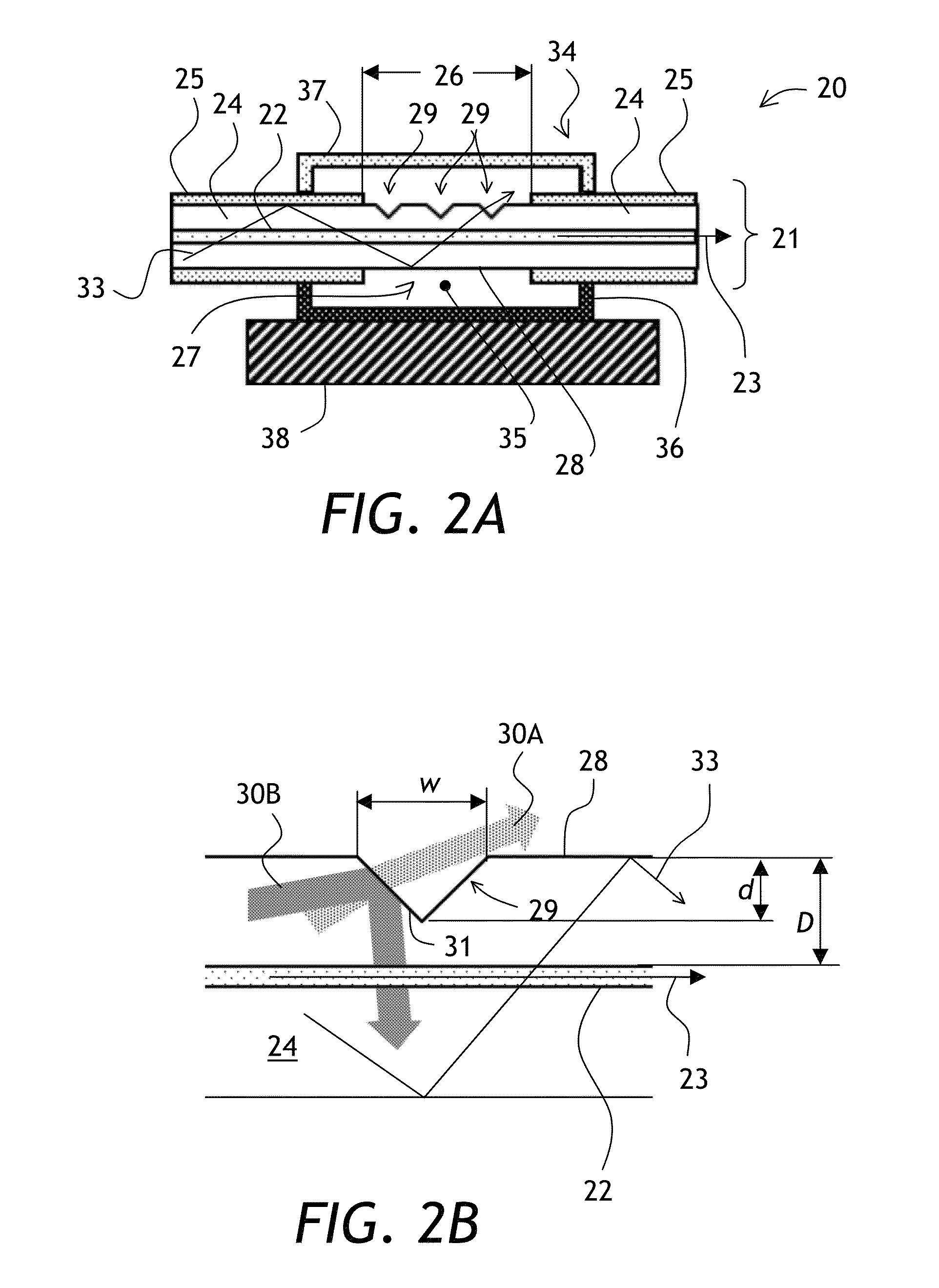Cladding light stripper and method of manufacturing
a technology of cladding light stripper and manufacturing method, which is applied in the field of optical fiber devices, can solve the problems of limited power handling capability of index-matching cladding light stripper b>10/b>a, limited optical power scalability, and difficult scaling up of cladding light power using high-index or index-matched layers. achieve the effect of high optical power level
- Summary
- Abstract
- Description
- Claims
- Application Information
AI Technical Summary
Benefits of technology
Problems solved by technology
Method used
Image
Examples
Embodiment Construction
[0044]While the present teachings are described in conjunction with various embodiments and examples, it is not intended that the present teachings be limited to such embodiments. On the contrary, the present teachings encompass various alternatives and equivalents, as will be appreciated by those of skill in the art.
[0045]Referring to FIGS. 2A and 2B, a cladding light stripper 20 includes a double-clad optical fiber 21 having a core 22 for guiding signal light 23, an inner cladding 24 surrounding the core 22, and an outer cladding 25 surrounding the inner cladding 24. The optical fiber 21 includes a stripped portion 26 wherein the outer cladding 25 is removed, forming an exposed section 27 of an outer surface 28 of the inner cladding 24. Thus, the stripped portion 26 is absent the outer cladding 25. The exposed section 27 includes a plurality of transversal notches 29 disposed along the fiber 21 in the exposed section 27 of the outer surface 28 of the inner cladding 24 to enable cl...
PUM
| Property | Measurement | Unit |
|---|---|---|
| depths | aaaaa | aaaaa |
| length | aaaaa | aaaaa |
| bend radius | aaaaa | aaaaa |
Abstract
Description
Claims
Application Information
 Login to View More
Login to View More - R&D
- Intellectual Property
- Life Sciences
- Materials
- Tech Scout
- Unparalleled Data Quality
- Higher Quality Content
- 60% Fewer Hallucinations
Browse by: Latest US Patents, China's latest patents, Technical Efficacy Thesaurus, Application Domain, Technology Topic, Popular Technical Reports.
© 2025 PatSnap. All rights reserved.Legal|Privacy policy|Modern Slavery Act Transparency Statement|Sitemap|About US| Contact US: help@patsnap.com



